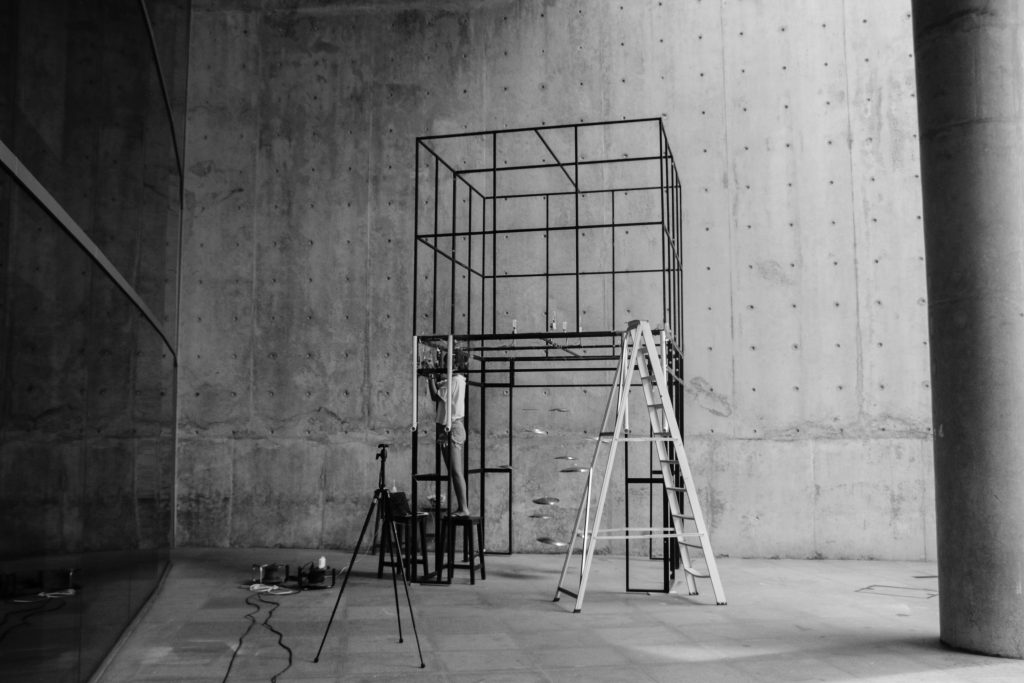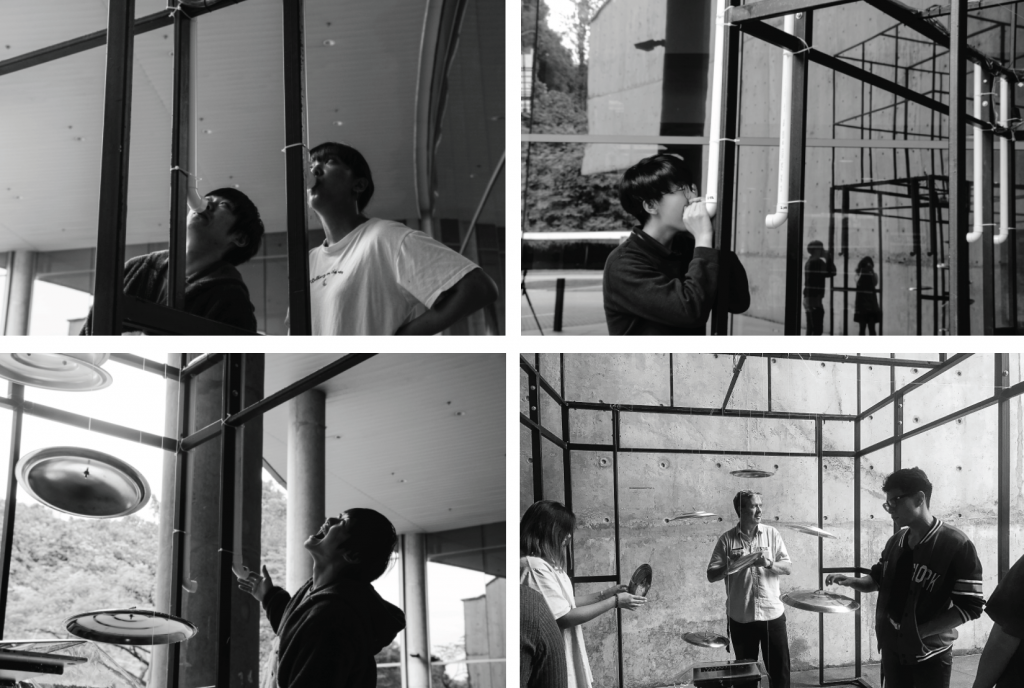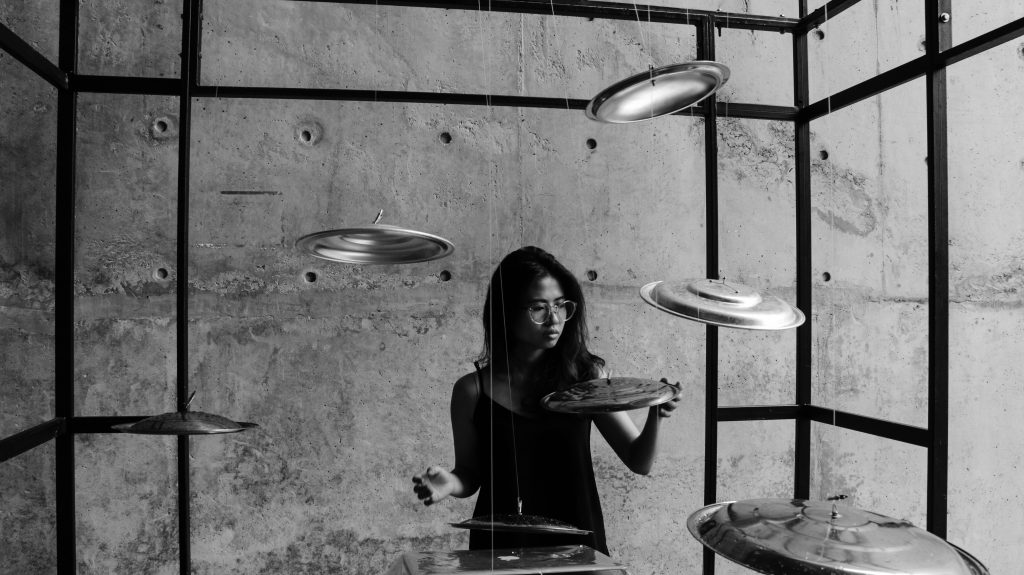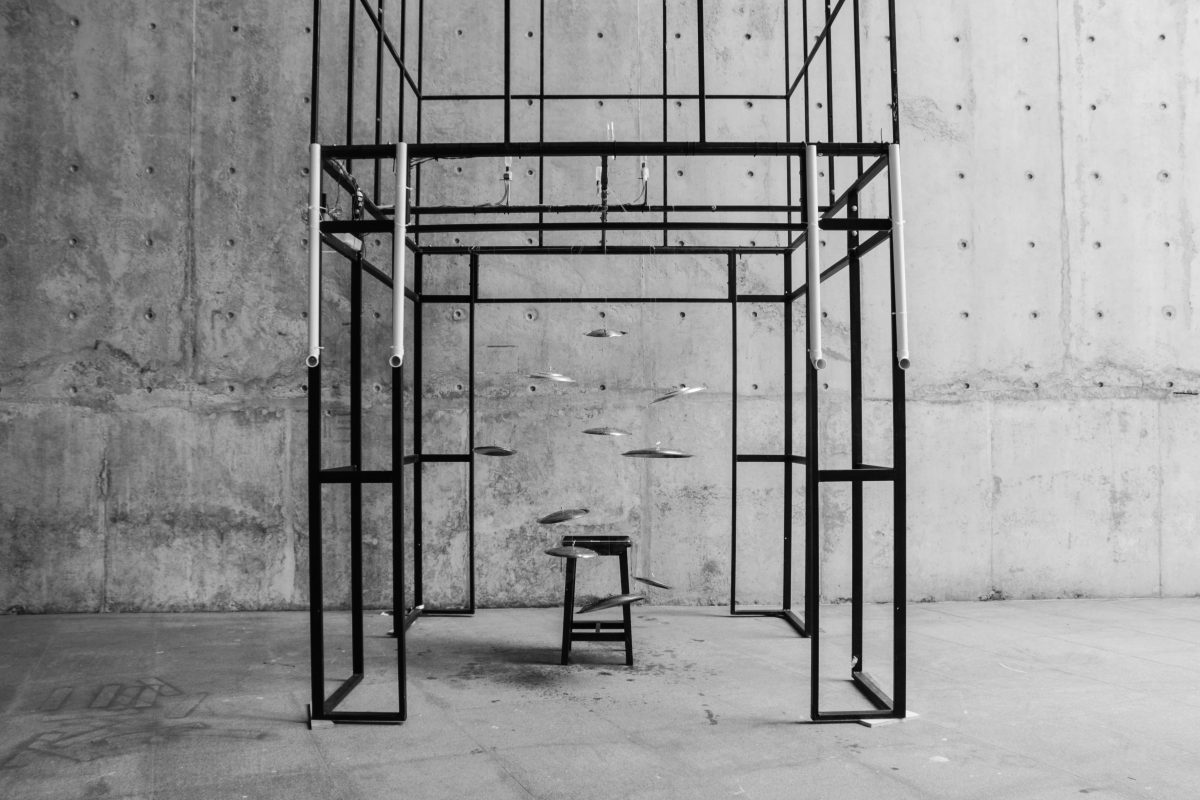S ECOND
By Tisya & Jiaman
How long is a second? How much time is between one heartbeat and the next?
Our understanding of time is through rhythm and repetition. The rhythm of ticking clocks, the rising and setting of the sun, metronomes, and counting mentally by the thousands, are all indications of time passing by. Time is man-made; there is no definite indication of time, and each one of us perceives it differently.
S ECOND (Pronounced as “Split Second”), aims to manipulate one’s sense of time through an ever-changing, rhythmic soundscape that allows viewers to visualise their own sense of time. By creating a spatial instrument that displays the viewer’s internal rhythms, the repetition of sound becomes a personal indicator for the passing of time. Participation from multiple viewers, collectively creates a soundscape, allowing them to perceive all the contributed rhythms as a whole and finding their own sense of time within that.
PROCESS
With the addition of digital components, we were able to challenge what is it that really defines a space. As the analog version of our installation was site-specific, we wondered if we would be able to take it out of the site and to an outdoor location through digital means.
Digital Input
Since our project was about rhythms in time, we were thinking of how else we might be able to improve on the interaction. Hence, we thought of utilising the human rhythms of our body clocks and have it sync to the rhythm of our installation. We were considering three different kinds of bodily rhythms: the rate of our blinking, breathing or heartbeat. We decided to settle for breathing because it is something that we do out of necessity but also mostly subconsciously, in a similar way as to how we notice the passing of time.
We tested the effectiveness of this with a microphone sound sensor by using an LED to indicate if the sound from breathing was detected.
 The challenging part with this was figuring out how to display it such that viewers will know that it is meant for breathing without the use of instructions. We did not want people to resort to using other methods to trigger the sensor as it would remove the poetics of the interaction.
The challenging part with this was figuring out how to display it such that viewers will know that it is meant for breathing without the use of instructions. We did not want people to resort to using other methods to trigger the sensor as it would remove the poetics of the interaction.
In the final installation, the repetition of dripping is synced to the visitors’ breathing activity. Through different rates of breathing, and by choosing to control or not control it, the viewer is able to modify the sound produced in the installation.
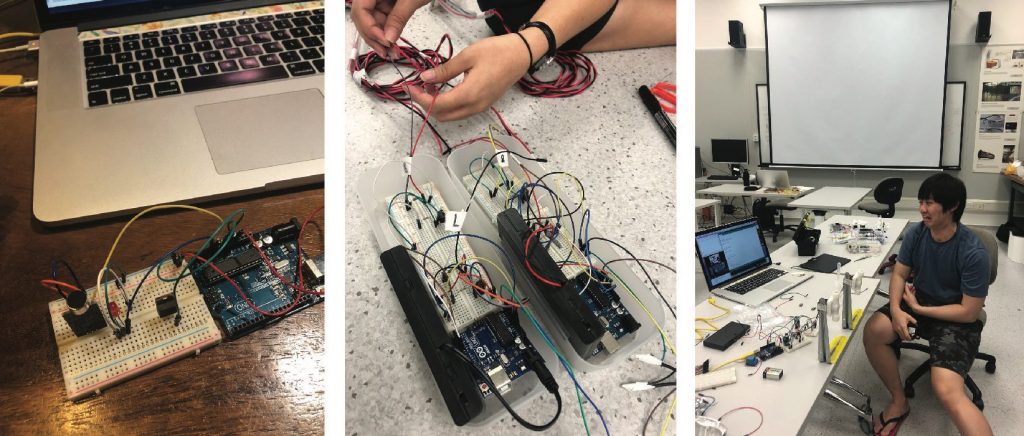 Digital Output
Digital Output
We also wanted to see how far we could take our concept digitally by recreating the effect of dripping water with light. We successfully managed to make it flow with every trigger of the sensor, but it was not durational – meaning that with a longer breath it will “flow” more.

However, after receiving feedback, we realised that we were straying too far from our initial project – not adding but rather modifying. Hence, we decided to stick to our initial idea of using dripping water to create a soundscape and used a solenoid valve to control it instead.
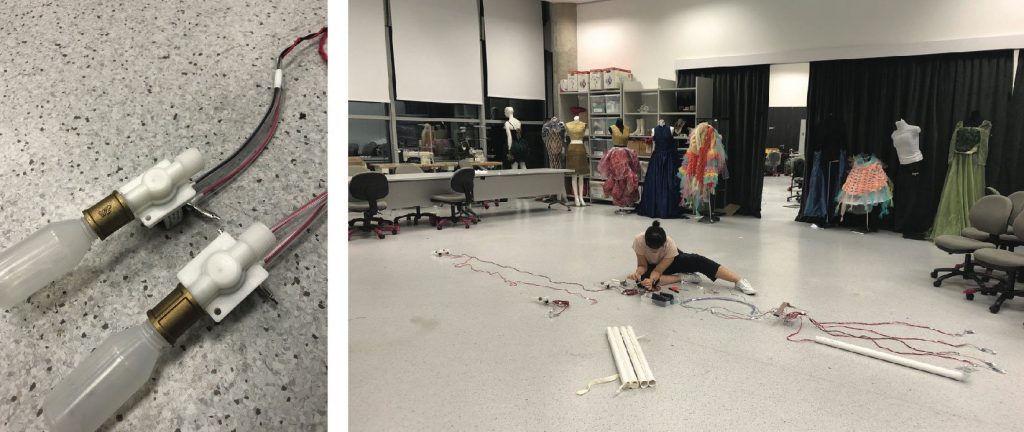 Setup
Setup
 We made use of the existing metal structure outside ADM for our installation. As the location is outdoors, the suspended lids also tend to react to the natural environment. When a strong wind blows, the lids tend to hit one another, creating a soundscape on its own. With a lighter wind, the lids shift slightly, creating a varied soundscape when interacted with.
We made use of the existing metal structure outside ADM for our installation. As the location is outdoors, the suspended lids also tend to react to the natural environment. When a strong wind blows, the lids tend to hit one another, creating a soundscape on its own. With a lighter wind, the lids shift slightly, creating a varied soundscape when interacted with.

 We also modified the sound that we captured from the surroundings through MaxMSP to recreate the effect of being in the staircase. What was interesting was the added dimension of sound that could also be detected from the environment such as cars passing by, people talking and birds chirping, etc. In this way, the outside space sounds like as one would if they were in the staircase – hence bringing the outdoors, indoors. The reverb effect also made users more aware of the sounds that they made as compared to when they were in the staircase.
We also modified the sound that we captured from the surroundings through MaxMSP to recreate the effect of being in the staircase. What was interesting was the added dimension of sound that could also be detected from the environment such as cars passing by, people talking and birds chirping, etc. In this way, the outside space sounds like as one would if they were in the staircase – hence bringing the outdoors, indoors. The reverb effect also made users more aware of the sounds that they made as compared to when they were in the staircase.
